If you’ve ever spent time reading this blog before, you know I want you to use Facebook ads to build your list. I love sharing my own tips and tricks for improving my cost per subscriber in posts like this one and this one.
But what ELSE should you be doing with Facebook ads? Selling your product or services? Sure, but only to a very specific audience.
In my ideal world, you would set aside anywhere from $40-$100 per month to dedicate to one thing:
Promoting a handful of the posts you publish on your Facebook page.
Let me make one thing crystal clear: I’m not talking about using the Boost Post button. That said, one of the techniques I’m going to show you in this blog post may look pretty similar to “boosting” a post. But I want you to learn to do it this way instead – it’ll help train you to use the Power Editor like a pro which will end up saving you time and money in the long run.
In this blog post I’m going to show you how and why to drive paid traffic to your blog posts. We’ll talk:
- targeting
- budget
- the important metrics to pay attention to
- list building tactics
- and launch strategies
Depending on how long you’ve had your Facebook page, the thought of paying to promote every single blog post you put out there might make you want hurtle something at your computer screen. “Damn you Facebook, why’d you have to kill my organic reach??? I used to get so much traffic from Facebook!”
I understand that frustration completely, but it’s time to get over it. Small businesses were unbelievably lucky to have a 100% free tool like Facebook for so long, and you’re STILL lucky. Lucky to be able to get your work shown to a very specific group of people while they’re in bed at night, at the gym, procrastinating at work, on the bus . . . It’s almost ridiculous how targeted you can make your audience! So stop bitching about the loss of organic reach and start investing in the incredible marketing tool that Facebook has created for us.
“So what are the benefits of running ads that promote my blog posts?”
I’ll admit it – I was against this in the beginning. I wanted to spend all my money on direct list building campaigns, and that’s a great place for a beginner to start.
But once you have a little extra money to spend on advertising each month, I encourage you to start promoting your blog posts on a consistent basis. Here are some reasons why:
- You reach a brand new audience. You can set up your ads so that they are only shown to people who haven’t visited your site in the past 6 months.
- You re-engage people on your list who aren’t opening your emails. Whenever I promote one of my blog posts, I usually start the campaign the day after I send out my newsletter email. Then I exclude anyone who’s already seen the post from my audience.
- You build buzz for your upcoming launch with pre-launch content. I wrote 8 blog posts about landing pages before launching Landing Pages that Convert. I spent about $50 promoting those blog posts to make sure as many people in my existing audience saw them as possible.
- You can move people through your sales funnel. During your launch, one or more of your sales emails should address people’s objections to your product or service. Turn that email into a blog post and then put a little money behind promoting it. This may be the most influential bit of your sales copy; you could show these ads just to people who’ve seen your sales page, or branch out and roll the dice on people who probably aren’t in your audience yet. (More on that experiment of mine in a minute.)
- You grow your list with higher quality leads. By now you’ve probably seen a lot of list building ads in your News Feed. They’re easy to spot: they’re almost all promoting a free guide, challenge, or webinar. Maybe you’ve clicked and signed up; I know I do on occasion. But when someone finds a blog post of yours, takes the time to read it, and then decides to sign up for your free whatever? That’s a different kind of subscriber. Conversions like this are harder to get, but they tend to come from higher quality leads than someone who saw an ad for my free guide to Facebook ads and took me up on that offer, even though they’ve never heard of me before.
How to Create an Ad that Promotes Your Blog Post
The simplest way to put together a Facebook ad for your blog post is to simply “boost” one of the posts on your page. The steps for doing this with the Power Editor are actually the same as the ones I outline in my free guide to list building with Facebook ads. There are just two changes:
- Instead of choosing Website Conversions as your campaign objective, select Clicks to Website.
- The targeting stuff will depend on who you want to reach with these ads. My recommendations and some examples of my own audiences are below.
I CAN’T EMPHASIZE THIS ENOUGH:
Make sure you’re tracking conversions for these ads. Scratch that: make sure you’re tracking conversions for EVERY ad. If someone clicks on my ad and reads my blog post, they might sign up for my free guide via the link in my nav bar, the form on my side bar, or my pop-up. Then they might end up buying Absolute FB Ads within a week or two. Make sure your ads are always tracking both lead generation and purchases by adding pixels to your ads.
Optimize Your Facebook Post Knowing that You’ll Be Turning It Into an Ad
What does that mean exactly? Two things:
- Make sure the image passes the 20% text rule (use this grid tool to make sure), and
- Don’t forget to tweak the headline and description if necessary.
Did you know that you can edit the preview that Facebook shows whenever you post a link to your page?
“Do I have to use an existing Facebook post to create this ad?”
Nope. You can create the ad from scratch in the Power Editor. If you’re interested in testing out different text or images in your ads, then this is the way to go. Again, make sure you select Clicks to Website as your objective.
To run this test, simply create two ads inside one ad set and then pay attention to which one gets the lowest cost per website click after about 24 hours. Then turn off the ad with the higher cost per website click.
Who Should I Target with These Kinds of Ads?
I could go on and on about the different options here, but let’s keep it simple for now. You can either target people who already know about you and your business (e.g. your fans, subscribers and people who visited your website recently) or people who probably haven’t heard of you before.
Targeting People Who Know About You
Strategy: I recommend you spend $5-10 per week to show your ads to people who already have knowledge of your business.
Why do you create weekly content? To be useful/entertaining/inspiring to your audience, right? Two other big reasons are so that you can stay top of mind and to establish yourself as the go-to expert in what you do. People aren’t usually interested in paying me for my products or services the minute they join my list. But since I’m consistently sending them blog posts about Facebook ads, they remember who I am and what I do. So when they are ready to invest in help with Facebook ads, they think of me. Or when they come across someone else who needs help with Facebook ads, they point them in my direction. (If you’ve done that before, thank you SO much. I owe you big time.)
Facebook ads will help you achieve all of those goals by making sure that you’re consistently reaching your existing audience, including anyone who’s stopped opening your emails.
How it’s done:
Under Audience in the Ad Sets tab, create an audience that either targets your fans or targets your list. Do not try to do both in the same audience – you’ll end up only targeting those fans that are also on your list.
Make sure to add in the demographics of your ideal customers. You’re bound to have fans or people on your list who fall outside the geographic, language or age demographics you’d like your ads to be served to.
Targeting People Who Are Completely New to Your Business
Strategy: The spend is completely up to you, but you’ll never be wasting money if you’re targeting a brand new audience. Why not? Because simply getting your name and your business out there in front of new people is ALWAYS a good thing (even if they don’t become subscribers, customers or clients right away). Reaching a new audience should be a big part of your ongoing marketing, so set aside at least $5 to target new people with ads for your blog posts every week.
Gearing up for a launch? I’d put aside $50-$100 to devote to driving new visitors to your blog posts in the month prior to your launch date, especially if the content is directly related to your new product or service.
Then when it comes time to get people to sign up for your free webinar or to send them to your sales page, you can target everyone who’s visited your site in the past month or two. These people are more likely to convert to subscribers or customers since they’ve already started getting to know you through your blog post.
How it’s done:
Whenever I run this kind of ad where I’m promoting a blog post to people who probably don’t know my brand, I use my typical demographics and then choose just one interest. It may mean my audience is small, but the idea is that it’s extremely targeted. Here are a few of the audiences I’ve used to run ads to blog posts:
Just like with any audience, you can put this one together inside the Power Editor in the Ad Sets tab, scrolling down to Audience.
I Completely Rolled the Dice on This One Ad
As I was wrapping up my most recent launch, I wrote a sales email that I quickly turned into a blog post. On a hunch I decided to post it on Facebook and then turn that post into an ad. It was a test: could I convert brand new people to customers by showing them an ad for this blog post?
When I turned this post into an ad, I targeted the interest “middle finger project” which is a blog about copywriting and running a small business. That blog post of mine talked about “the Law of Shitty Clickthroughs” and since The Middle Finger Project’s audience is used to very colorful language in most of the posts on that blog, I guessed that it might be a good fit.
Each click on my blog post was $1.00 each, higher than I was hoping. But out of the 50 people who clicked, one of them ended up buying my $47 ebook, and 2 others signed up for my free guide to Facebook ads.
In my book, this campaign was a huge success. I may not have made any money on it, but 50 new people now know a little more about me, my business and my position on the right (and wrong) way to run Facebook ads. Works for me!
The Important Metrics to Watch
In order to write this article, I asked everyone inside the Absolute FB Ads Support Group to send me their questions about running ads to blog posts. Here are a few things they asked that you might be wondering about as well:
Q: How long do I run the ad given the size of my list?
A: The answer to this is the same regardless of the audience you’re targeting. You need to pay attention to the Frequency metric.
People have lots of different opinions about this, but if I’m targeting brand new people, I don’t like to oversaturate them with my ads. My maximum frequency for that kind of audience is 2-2.5.
If I’m targeting my fans, list or website visitors, I might let the frequency get to 3.
PRO TIP: if you want to get more of your audience to see your ad just one time a day, select Daily Unique Reach under Optimization & Pricing. This is a great option when you’re gearing up to launch something. It makes sense to try to reach as many people who are already in your audience as possible with your pre-launch content.
Q: How do I read the results of blog post ads?
A: That depends on your goals for this kind of campaign. If one of them is list building, compare the cost per lead to ads you’ve run that are straight list building.
I only spent $4 on the campaign, and no doubt the results would have changed if I had spent more, but when I ran an ad targeting the interest LKR social media, I brought in a handful of new subscribers for just $0.67 each. You can read more about that campaign here.
If your goal was simply to get new people to read your post and engage with your brand, check out Google Analytics. Did people who came from those Facebook ads stay more or less time on your site than other sources?
In order to differentiate Facebook ad traffic from regular Facebook traffic, make sure you always add this bit of code to your ads in the Power Editor:
utm_source=facebook%20ads&utm_medium=ppc&utm_campaign=FB%20Ads
If your goal was to test the interest of this topic among your existing audience, then look at the click-through rate. You’ll have to test a lot of different blog posts with the same audience in order to have different CTRs to compare.
Q: What’s a good cost per website click for these ads?
A: That depends on who you’re targeting. If I’m targeting my fans, list or website visitors, I want my cost per website click to be $0.50 or less. If I’m targeting brand new people, I don’t look at my cost per website click; I care more about my cost per lead. If my leads are more than what I normally pay in a regular list building campaign, then I’m not going to spend more than the $5 to $10 I allotted for that campaign.
Q: What’s a good CTR for blog post ads?
A: If you’re targeting your list/fans/website visitors, I’d like for your CTR to be above 5%. But the best thing to do would be to spend one month boosting one post per week to the same audience and seeing which topic/headline did best based on the CTR. If you’re targeting a new audience, don’t expect your CTR to be above 3%.
Q: Should I pay for ads to a blog post or to an opt-in landing page?
You should do both. You will likely grow your list more quickly with an opt-in landing page but driving traffic to blog posts is like the equivalent of “taking things slow” and building rapport.
Stop. Take a breath. That was a lot of info I just threw at you.
The easiest way to digest it all is to get to work on some of it. So why not choose a recent blog post and create an ad with it, targeting people who aren’t connected to your brand yet?
Over in the Absolute FB Ads Support group, a bunch of us are about to jump into a 4-week practice of methodically promoting blog posts and reading the results. Want to join us? Click here to join Absolute FB Ads and to gain access to the group!

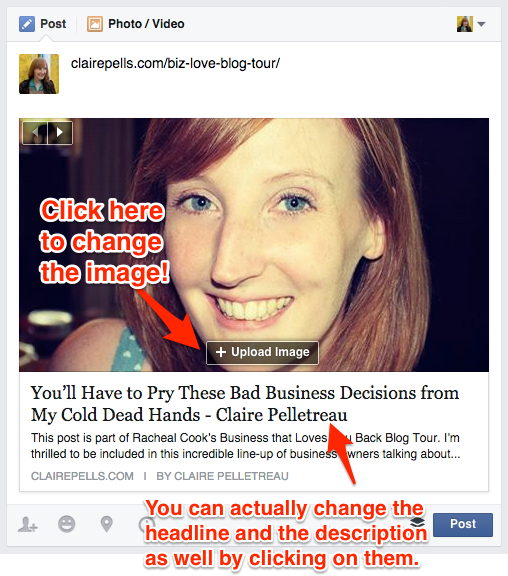
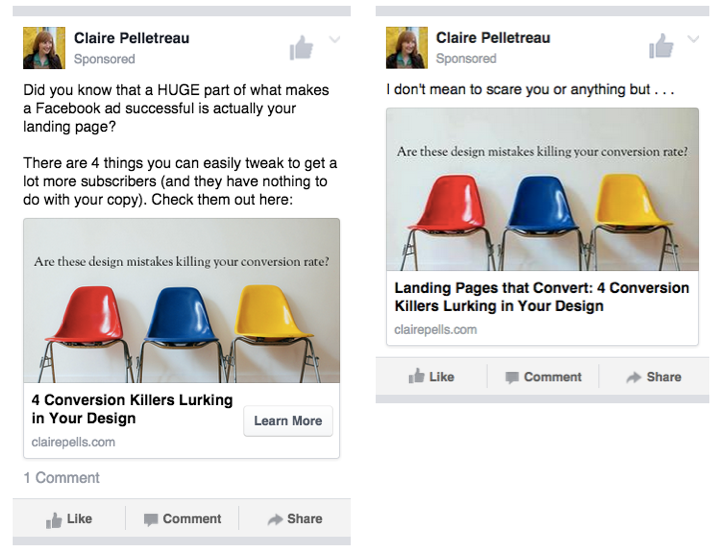
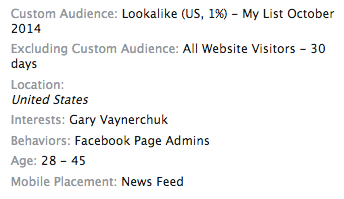
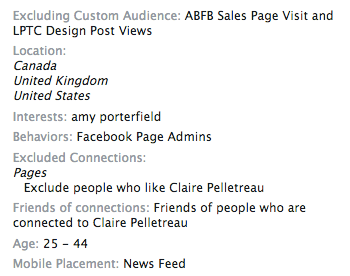
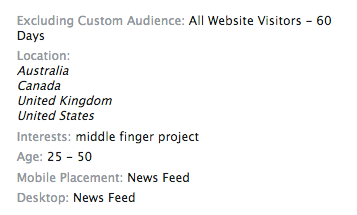
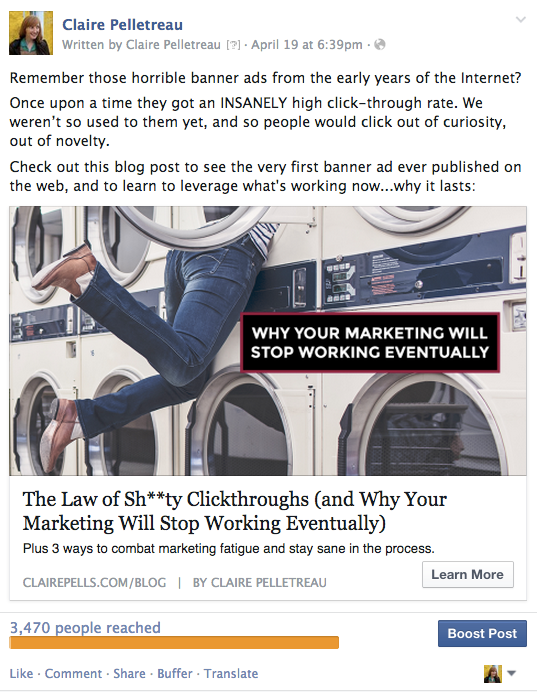



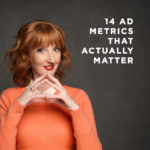
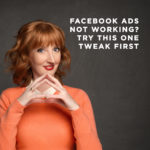
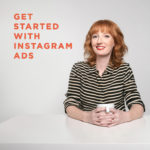
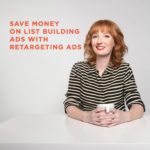
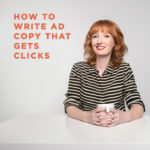
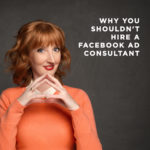


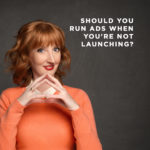
Great info Claire. Thanks!
You’re welcome Hector! Thanks for hanging out – next time we’ll coordinate our layovers, OK? :)
Another kick-arse post young lady! Looking forward to the blog post challenge. Perfect timing cos we’ve got about a month before we launch Get Instasavvy…
Ooh, so glad to hear it! Working on it for Monday, keep an eye on the group.
Thanks for your sharing, get new things from your article today. Great article !
Thanks Putri!
An incredibly helpful post Claire! I had a question about how many different adds + audience combinations you use.
Eg, I’m assuming that if I want to set up 2 different adds and then turn off the more expensive cost per click after 24 hours, that I should use the same audience for both so that the only variable is the add not the audience.
The reason for the question is that I have a post I’d love to target to both people who (1) are new to my brand and (2) already know about my brand.
Would you suggest using the same add and just changing the audience in this instance? It’s only 1 blog post and not part of a launch strategy, so I’m reluctant to throw too many variations at the (FB) wall. Thanks!
Hey Jen! I don’t know if it’s the early hour or just the fact that Fb ads are complicated, but I’m having a hard time wrapping my brain around your question. But here’s what I THINK will help: create one ad, and run it in 2 ad sets. The ad set is where you identify the audience. So one ad set will have an audience of people who are already familiar with your brand, and the other one will be new peeps.
Just a heads up: the new peeps will always cost more to reach since they don’t know you. Be prepared for that: you probably won’t get dirt cheap clicks. Does that make sense?
(If you want to test out ad copy or the image, then just focus on one ad set at a time, like you said. Keep the variables to a minimum.) :)
I have no doubt it was my convoluted question Claire!
Having been through the process now and set up my first add (yay me!), I’ve got a better grasp on the lingo. Yes, that was my question so you’ve answered it perfectly.
I think the hardest part of the process is not understanding FB adds but writing the add itself! Thanks again :)
Hi Claire, I just wanted to let you know my results from my first experiment with using FB adds to promote a post.
I created 1 add and 2 ad sets (one for people already familiar with my brand and the other for new peeps). Interestingly my CTR for people new to my brand (4.3%) was higher than my CTR for those familiar with the brand (3.3%) which is the opposite of what you suggest in your post. Unfortunately my conversion rate to subscribers on my website was very low but I know that my existing opt-ins on my website need some work. However FB likes skyrocketed. And while I’d obviously prefer to get the people on my list, at least they are still in the community.
My takeaway from the experiment – it’s a very promising way to get additional (qualified) traffic to my site. I’m looking forward to my next experiment with it!
DAMN GIRL that’s an awesome CTR! I’m so thrilled to hear you really put this post to work for you. :) Just don’t forget to look at the cost per click for both of those groups. Just because you had the higher CTR on one doesn’t mean it’s the best target audience for you, you know?
Keep up the amazing work!
Thanks Claire. I just had a look at the cost per click and it’s still lower for people new to my brand ($0.15) as opposed to existing fans ($0.25). So people new to my brand had both a higher CTR and a lower cost per click.
:) Hello
Advertising for Free Online projects here in casoony.com !!!
Hi Claire, very helpful post. I have a question … if i change the facebook image do you think i have also change the blog post image? So the person who clicks my ads ll see the same image in the blog post.
Thank you
Hey Peter! You don’t HAVE to change the image in the blog post, but it usually helps to have congruency between your ad and your post. In other words, people subconsciously expect to see something similar to the ad they just clicked on when they’re redirected to your page. But it’s definitely not a hard and fast rule so if it doesn’t work for you, don’t worry about it.
When I want to run ads to my blog posts, I usually create the ad image using the same image I’ve got in my post, just tweaked to have the right dimensions and to follow the 20% text rule.
I’m afraid to promote my blog with Facebook. I think it will perceive my posts as spam. May be the root of the problem is theme of his blog – I write about different online casinos like http://casinonsvenska.eu/, secrets of online playing and so on. What’s your opinion?
Hey Michael, you MAY be right to be concerned. Have you ever tried boosting a post? Have you ever had any ads rejected because of the content of them?
I’m quite skeptical to promote my blog through Facebook, to be honest. They made a lot of changes ti the algorithm and advert manager lately.
Cristina | *janded
That’s a great post.Really helpful for people who are planning to advertise on facebook.I would like to share a blog which might be helpful too in creating a facebook campaign http://adlegions.blogspot.in/2017/01/how-to-advertise-on-facebook.html
Hi Claire,
I love your content. You bring so much value. I have a question when it comes to Google Analytics and Facebook Ad Campain. I have create 2 ads(A/B) testing and I have included for each Ad the utm parameter using the URL Builder. Unfortunately if I go on Google Analytics ->Acqusition -> Scource Media/ Campaign I can see the clicks on the overall campaign but not for the individual ads. It says “Not set” . Do you know how I can fix it? Thanks and keep up the good work!!
I’m not sure why that happens, but it may be because of where you’re adding the utm params. Are you adding them in the little box that FB provides in the Tracking section? If so, don’t add the ? – start directly with utm_source= etc etc.
I am thinking to write a blog and do Facebook advertising on it.
Initially, my motive is to drive traffic on my blog and for that i want to run Facebook ads to get more and early traffic on blog.
I want your suggestion about it, is it right for my blog and how much i should spend in starting to drive traffic?
Is there any tool for Facebook ads through this i get an estimate budget for it like google adwords keywords tool?
I am waiting for your reply. Please revert me ASAP.
Hi Reenu, there is not really a tool like this for Facebook ads. The price you pay to show your ad to people will depend on what exact targeting you use so if the results you’re getting seem too expensive then one metric you can look at is the CPM (Cost per 1000 Impressions) – if it’s really high then changing your targeting could help bring results in for cheaper. $0.50 or less per website click is standard so if each website click is costing you more than this then you might need to look at changing targeting or ad creative. Claire suggests starting at around $5-$10 per day while you’re testing.
Do you recommend boosting (as a post ad not the boost button as you talked about) EVERY post or only certain posts? I publish new stuff to my site on a bi-weekly rotation of every other day (sort of) … Mon, Wed, Fri, following Tue, Thu, Sat. I’d like to boost every post to maximize website visits but have gotten the advice to only boost one “replesentative” post as a post ad each week.
My thought was run each ad (daily) for 1 day, then the next post’s ad for 1 day, etc. if I run them all in the same ad set, won’t I still get the FB optimization of my audience? Or am I better on all fronts to choose 1 per week and boost it?
Thanks … great article
Hi Rich, you might find it hard to get traction on the ads if they run for only 1 day at a time. If you choose to do it this way definitely put each new ad into a new ad set as any new ads you add to the same ad set will usually not perform. Since the original ads are already running successfully they always win out over any new ads. My recommendation would be to choose 2-3 posts per week and run them for a week at a time. Hope this helps!
nice post!
important points has been covered, very informative.
Cheers Claire!
Hello! The year is going to an end how are you preparing for the great festival? Interested in securing a loan? Do you need a loan for business, execute a project, purchase a properties, Education, or pay off bills STANLIB WEALTH MANAGEMENT LIMITED is a financial organization that can help you accomplish your dream with less effort. Low interest rate WHATEVER LOW YOUR CREDIT IS! You can still apply don’t miss this chance email; stanlib_management@aol.com them today.
Thank you! This is very helpful as I am promoting my blog posts.
I love the way this blog is written – it’s clear, concise, and easy to understand.
Your resplendent prose possesses an innate ability to captivate and ensnare, leaving an indelible impression upon the discerning minds that wander into the realm of your luminous blog.
Promoting blog posts with Facebook Ads is a game-changer! It boosts reach, engagement, and conversions. The article beautifully breaks down why it’s essential and, more importantly, guides on budgeting. I’m convinced; it’s time to supercharge my blog promotion strategy. Thank you for sharing these valuable insights!
Great article!